name: inverse layout: true class: center, middle, inverse --- # Analyzing Quantitative Data Jennifer Mankoff CSE 340 Winter 2020 --- layout:false [//]: # (Outline Slide) .title[Today's goals] .body[ - Discuss how we determine causality - Practice onboarding participants - Practice data analysis ] --- # How do we determine *causality*? Implies *dependence* between variables Assumes you have measured the right variables! --- # Dependence/independence Events that are independent - Flipping heads and then tails - Day of week and whether a patient had a heart attack (probably?) Events that are dependent - Vice presidential candidate and presidential nominee - Diagnostic test being positive and whether patient has a disease ??? What if we collect this kind of data, what might be true about it? --- # What might we expect to see is true of dependent variables? - When one changes, the other changes at the same rate - When one changes, the other changes at a faster rate - When one changes, the other does the opposite ??? Called a correlation We can see it in a scatter plot Go look at data and make one --- # This is called *Correlation* We can see it in a *scatterplot*  --- # Correlation demo [OpenSecrets.org data set on internet privacy resolution](https://www.opensecrets.org/featured-datasets/5) Open it yourself: [tinyurl.com/cse340-ipdata](https://tinyurl.com/cse340-ipdata) --  --- # Correlation != Causation 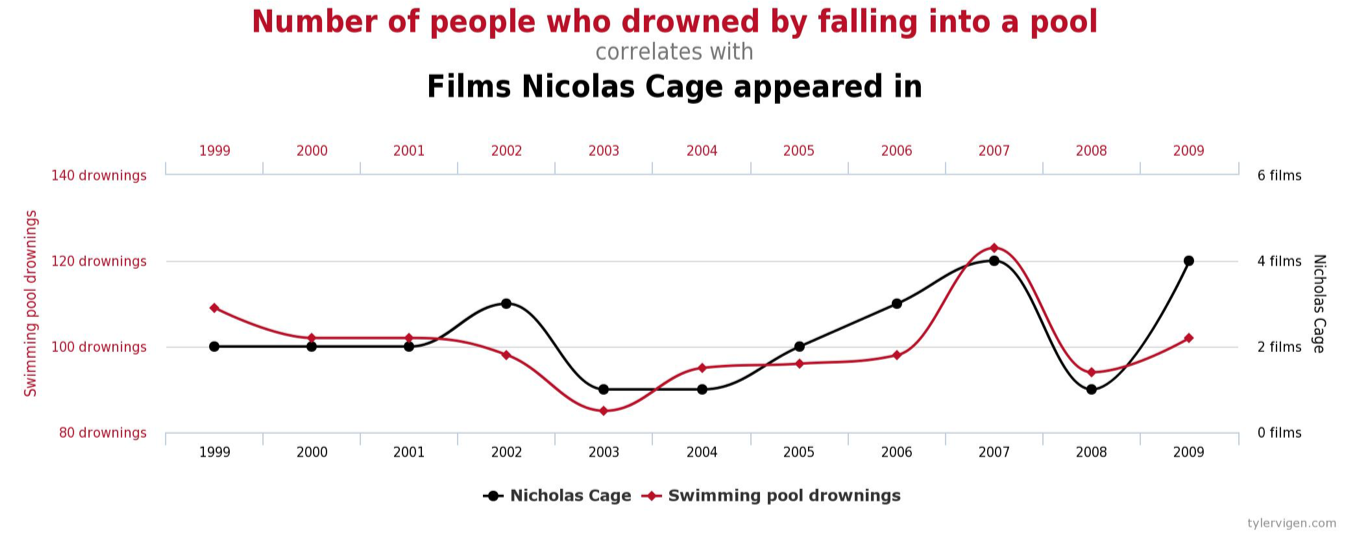 --- # Correlation != Causation 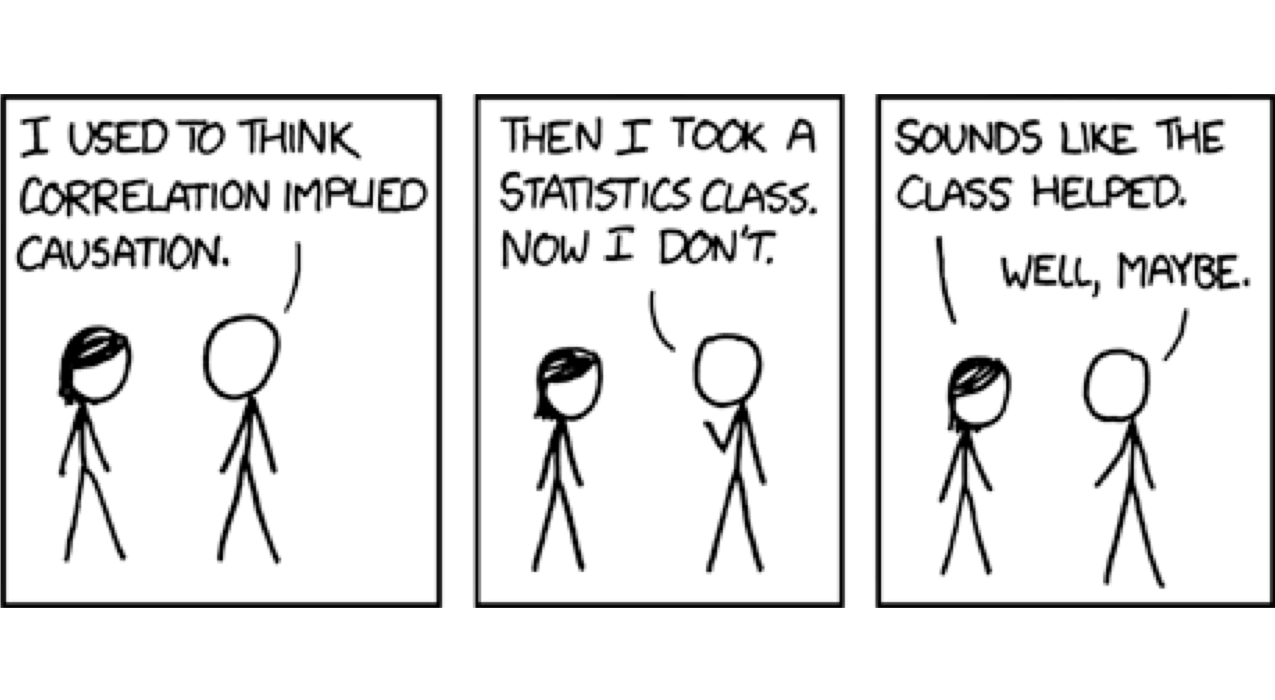 --- # Grouping for analysis Pivot Tablest demo [tinyurl.com/cse340-ipdata](https://tinyurl.com/cse340-ipdata) -- 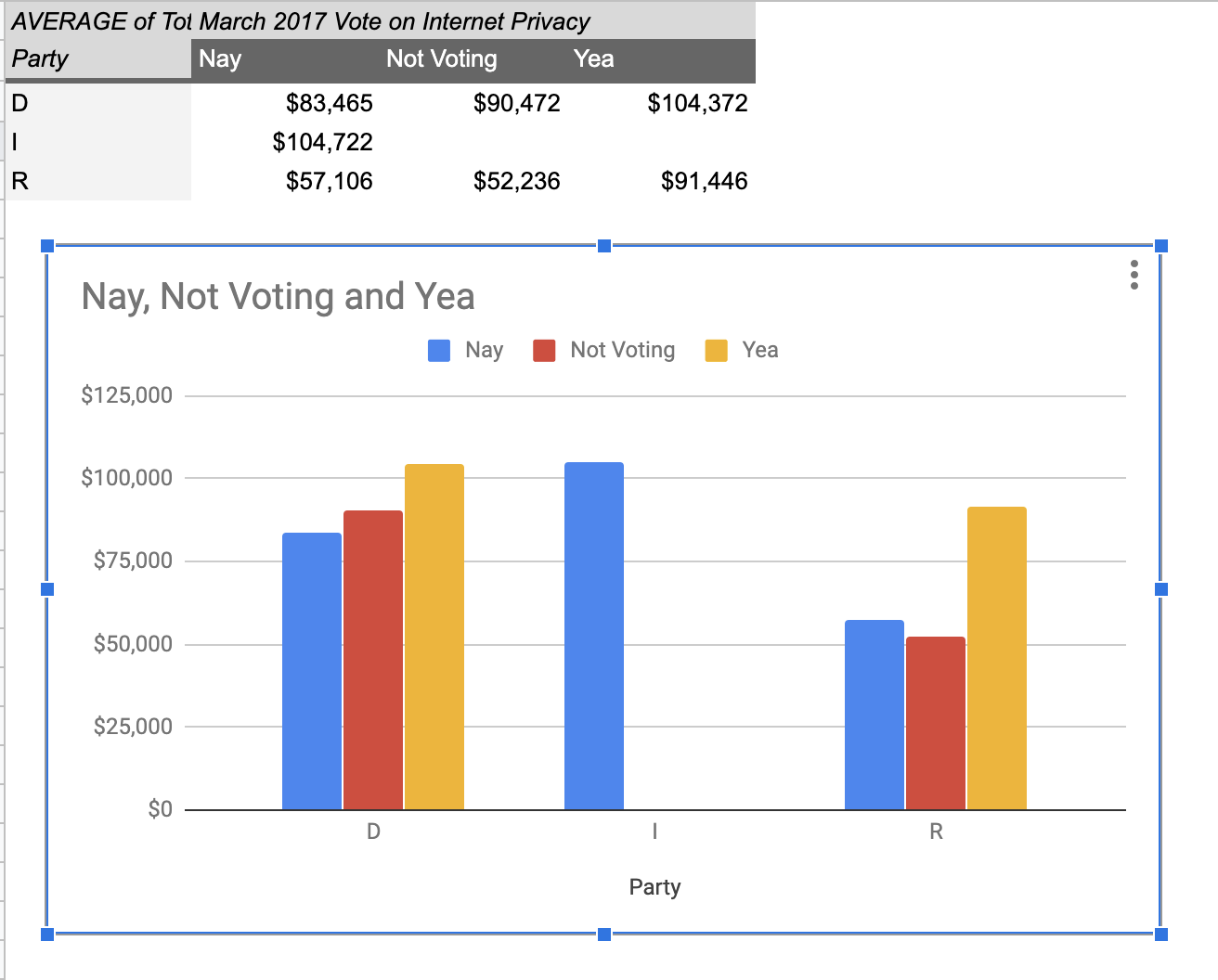 --- # Grouping and charting helps you check your assumptions speed:  -- [tinyurl.com/cse340-20w-data](https://tinyurl.com/cse340-20w-data) Not that different in my sample set (just me doing it 3 times). We hope to see better results in your data, and even better if we merge all your data! --- # Comparing two groups to see if they are different Bar charts are not enough to assess difference though. Need to see the *distribution* --- # Histogram shows you a *distribution* Pivot Tablest demo [tinyurl.com/cse340-ipdata](https://tinyurl.com/cse340-ipdata) --  --- # But having the right chart matters  --- # Normal Vs Pie |Normal | Pie| |--|--| |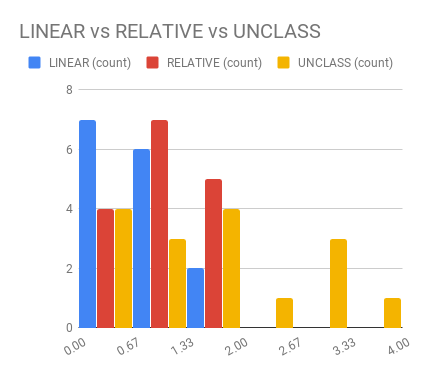|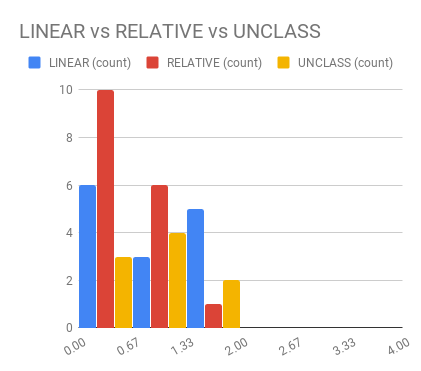| The cause of the difference only shows here. --- # What do we learn from a histogram? 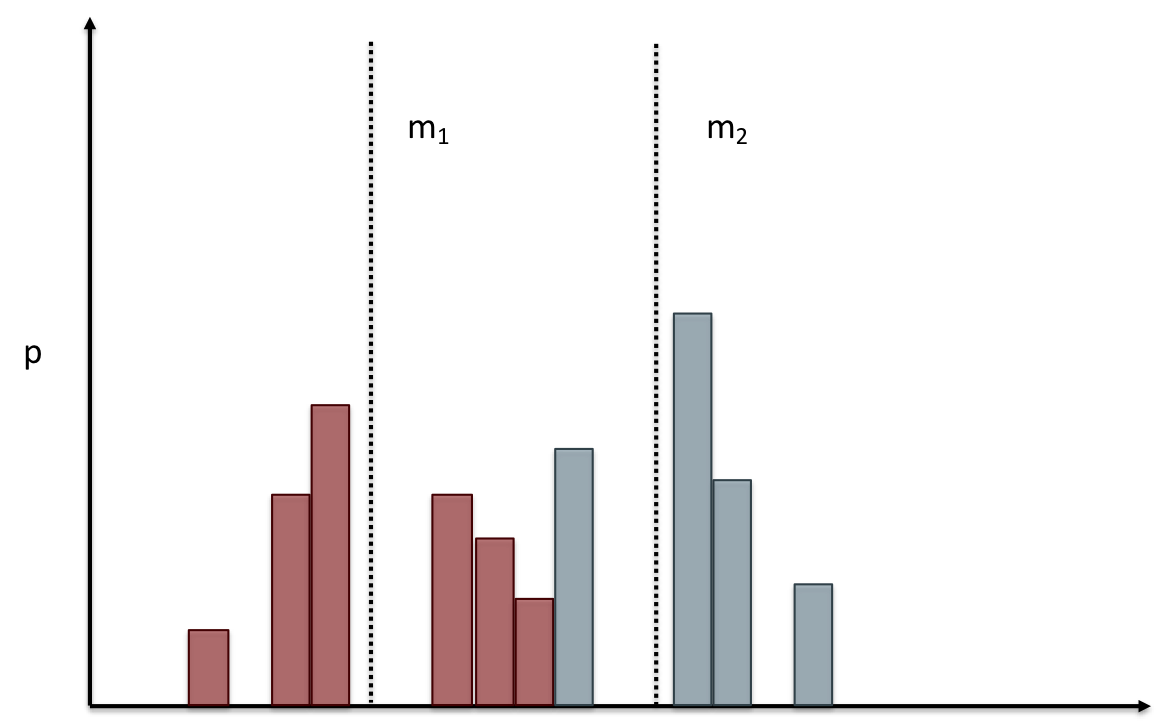 ??? - shows a distribution - helps us tell if things are INDEPENDENT --- # Histograms What do we learn from a histogram? - shows a distribution - helps us tell if things are INDEPENDENT --- # Comparing two groups 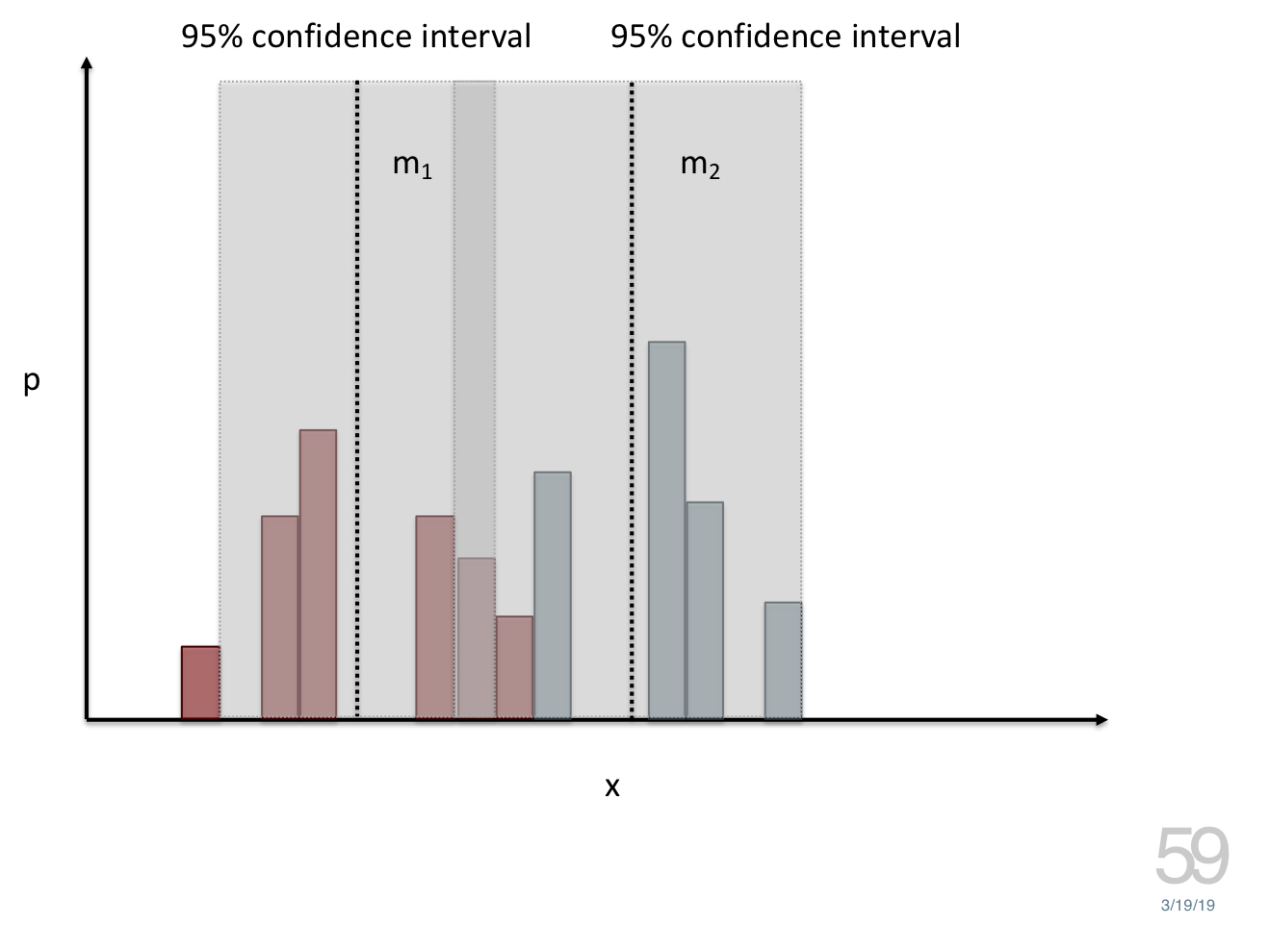 --- # Comparing two groups 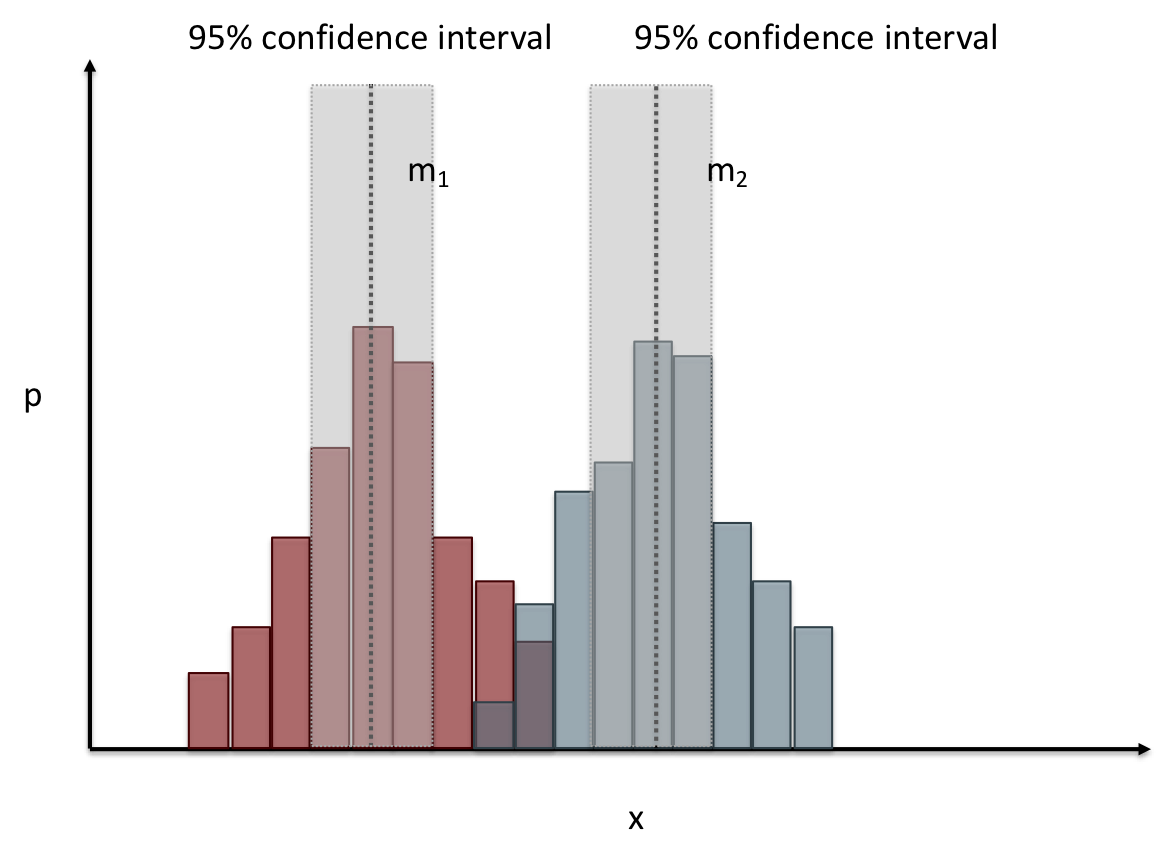 --- # Comparing two groups 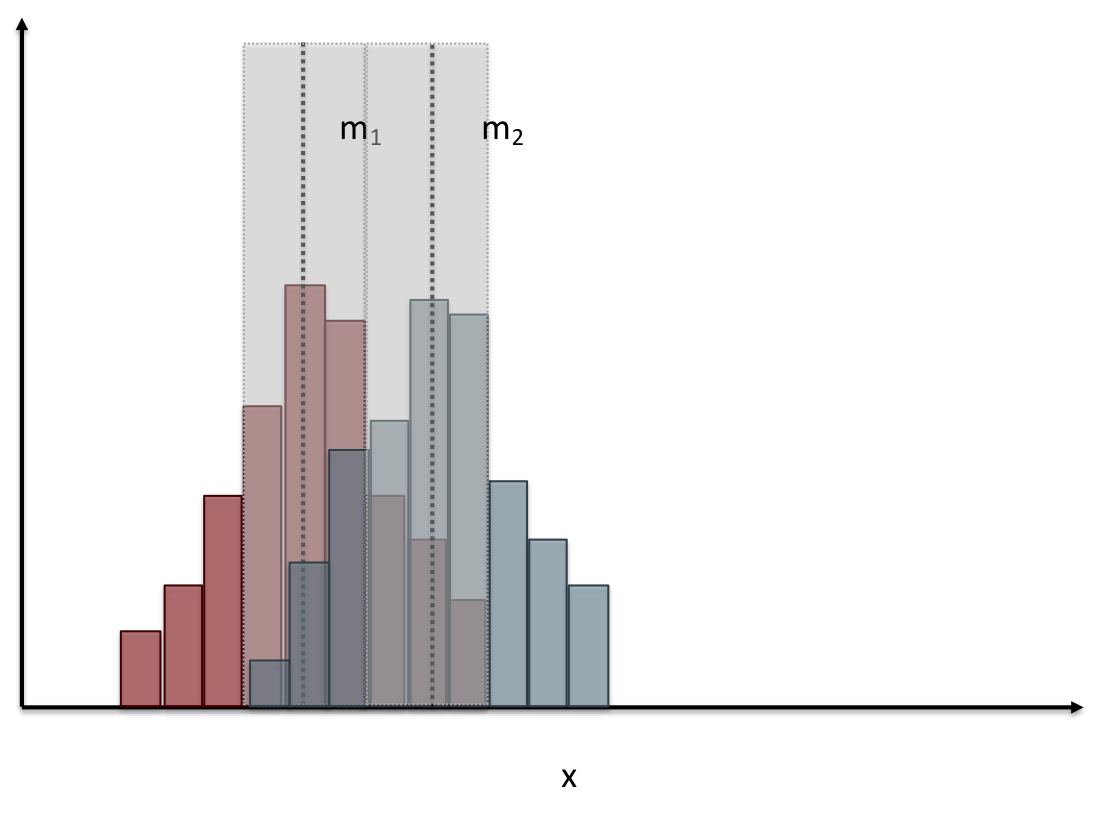 --- # Comparing two groups 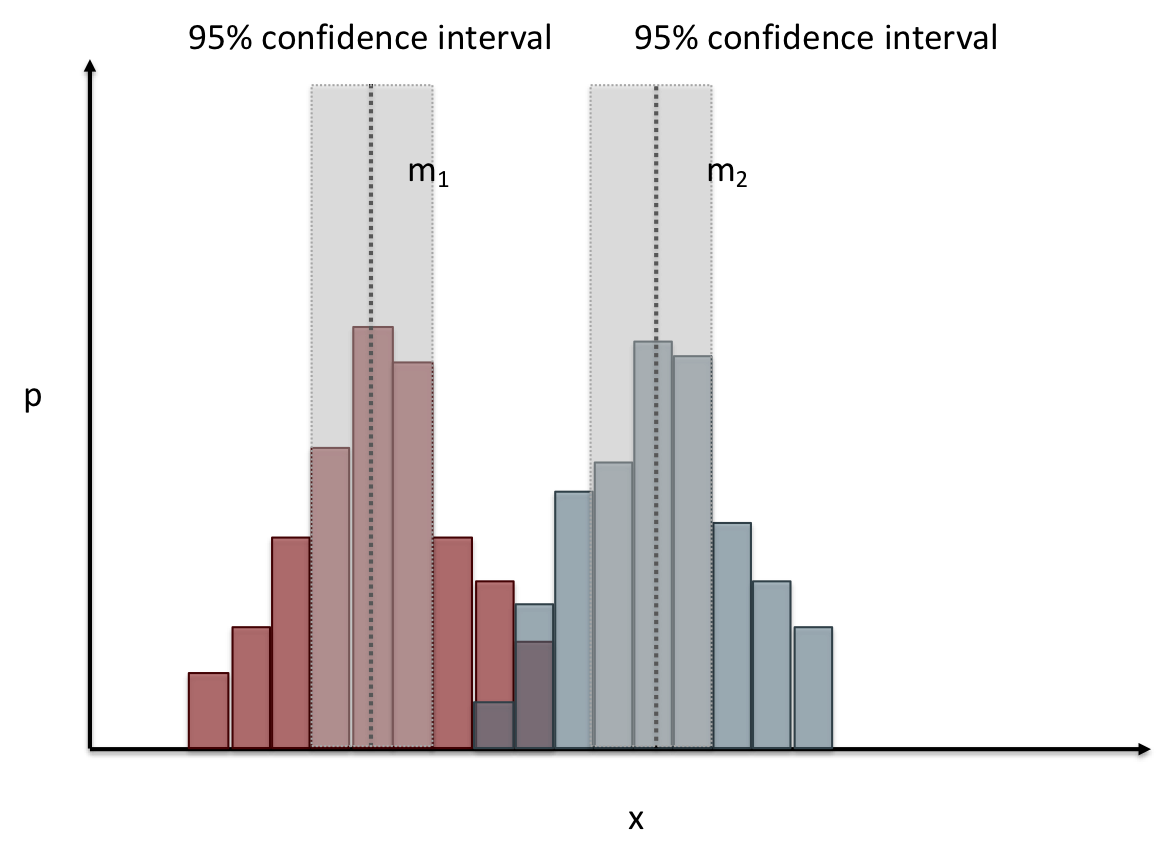 --- # Comparing two groups  --- # Comparing two groups 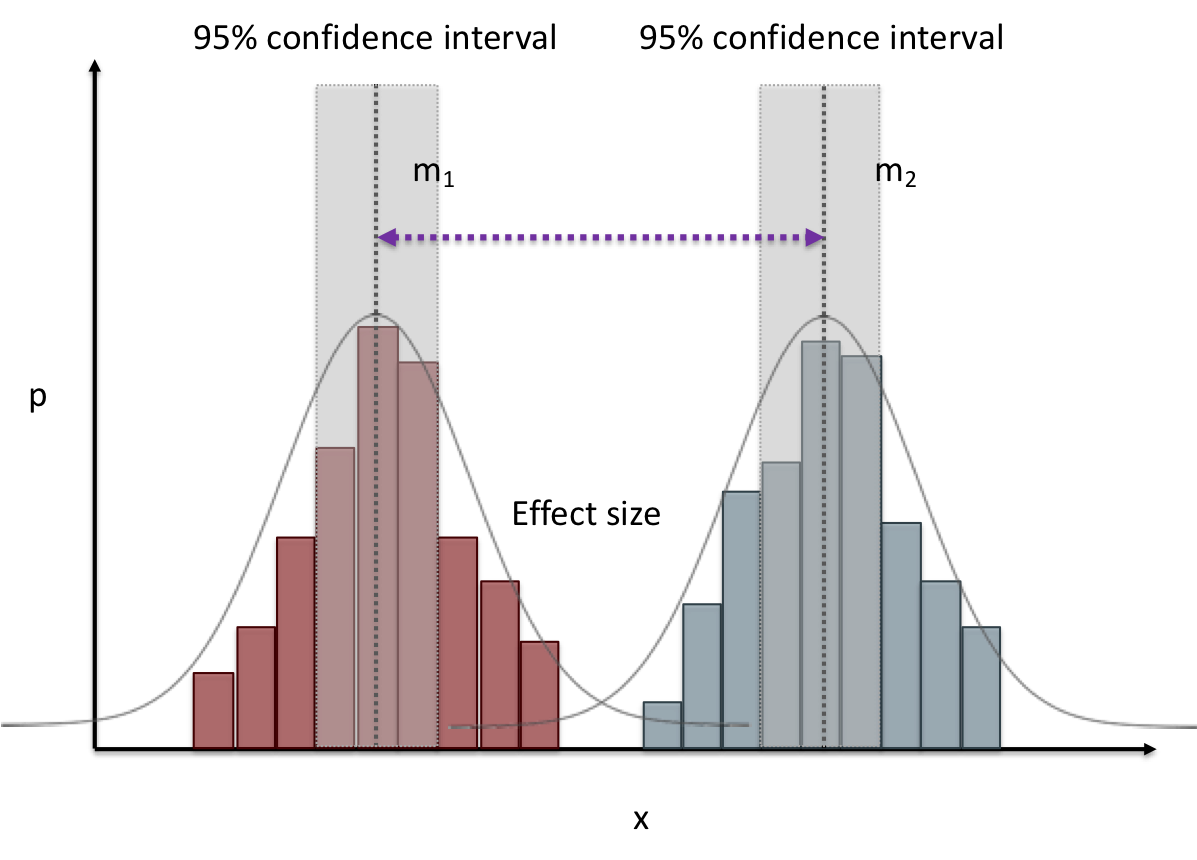 --- # Common Statistical Test for comparison: t-test Tests for difference between two samples Best used to determine what is ‘worthy of a second look’ Limited in its applicability to normal, independent data Does not help to document effect size [the actual difference between groups], just effect likelihood --- .left-column[ ## Problems with t-tests The more implausible the hypothesis, the greater chance that it is a ‘false alarm’ ] .right-column[ 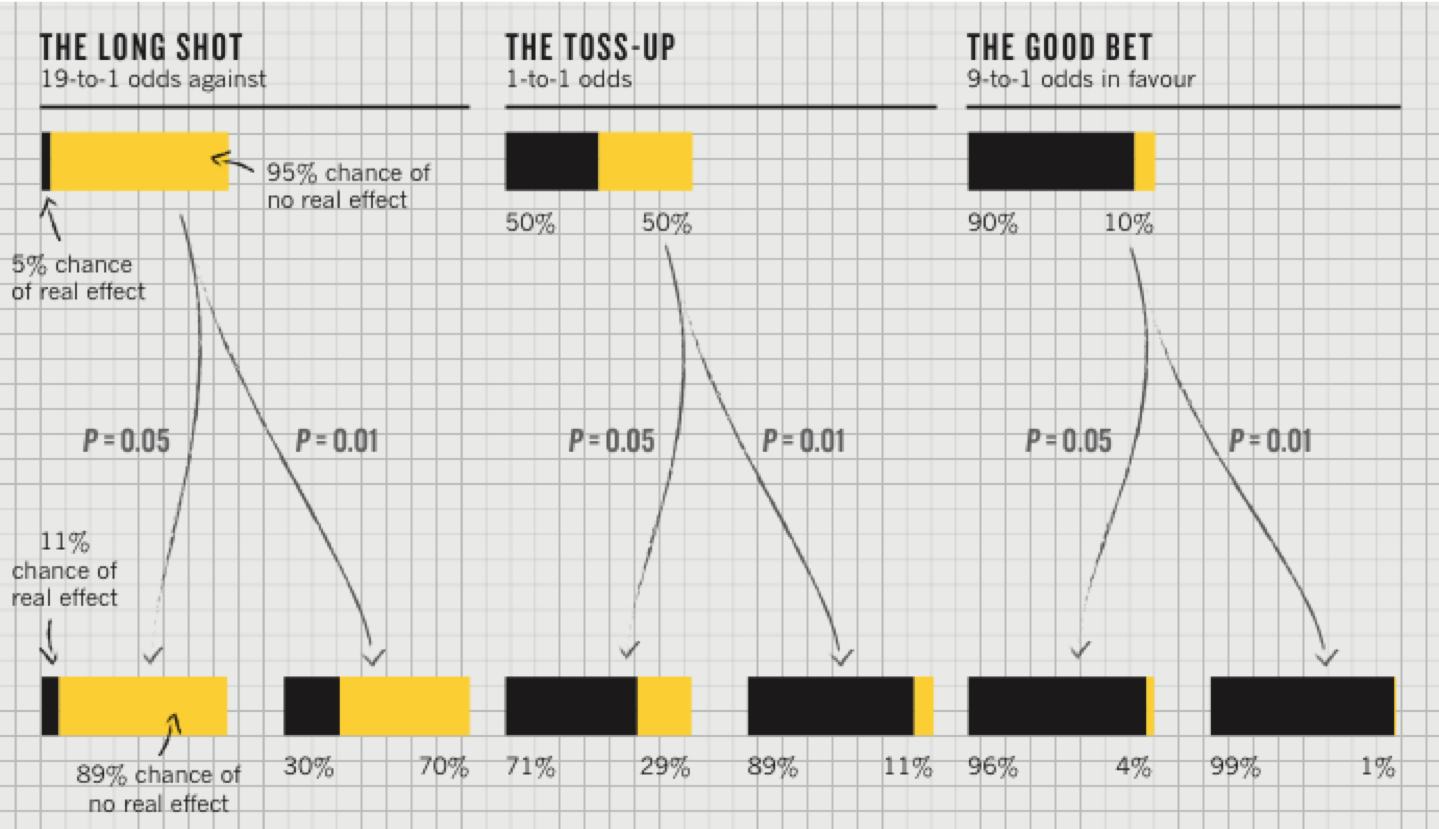 ] ??? Top row: Prior (what's known to be true before the experiment) bottom row: Calculated p-value Notice the middle column, where something that is a toss-up has higher plausability than we would expect. This is a "Type 1 error" Alternatively, a small sample may cause a Type II error (failure to detect a true difference) due to random sampling bias --- .left-column[ ## Problems with t-tests ] .right-column[ - Doesn’t take prior knowledge into account - Susceptible to ‘data dredging’ - The more tests you conduct the more likely you will find a result even if one is not there - Adjustments mid experiment - Gives a yes or no answer: Either the null hypothesis is rejected (the result would be unlikely in a world where the null hypothesis was true) or it cannot be rejected - Based on assumed ‘average’ sample ] --- # Which problems might affect our study? ??? Too many comparisons -- 18 separate comparisons (3x3 conditions, 2 measures) ANOVA (**An**alysis **O**f **Va**riance): Fancy t-test that accounts for the whole group effect before doing pairwise comparisons ??? - Doesn’t take prior knowledge into account - Susceptible to ‘data dredging’ - The more tests you conduct the more likely you will find a result even if one is not there - Adjustments mid experiment - Gives a yes or no answer: Either the null hypothesis is rejected (the result would be unlikely in a world where the null hypothesis was true) or it cannot be rejected - Based on assumed ‘average’ sample --- # Demo of t-tests in our spreadsheet [tinyurl.com/cse340-20w-data](https://tinyurl.com/cse340-20w-data) --- .left-column[ ## Document what all of this in your [report](/courses/cse340/20wi/assignments/menu-report) ] .right-column[ - Describe your hypothesis - Illustrate with graphs - Optional: use Table of results found in `Speed Analysis` and `Error Analysis` to describe Statistical Significance: `Pie menus were twice as fast as normal menus (M=.48s vs M=.83s), F(1,43)=295.891, p<.05. Unclassified menu items were harder to find than linear and relative ones (M=.84s, .59s, and .59s respectively), F(2,43)=93.778, p<0.5. We also found an interaction effect between menu and task (as illustrated in the chart above), F(5, 43) = 51.945, p<.001.` ] --- # Drawing Conclusions .left-column[ <div class="mermaid" style="font-size:.5em"> graph TD S(.) --> Hypothesis(Hypothesis:<br>Decreased seek <br>time and errors) Hypothesis -- "Study Design" --> Method(3 menus x <br> 3 task conditions ) Method -- "Run Study" --> Data(Data) Data -- "Clean and Prep" --> Analysis(Analysis) Analysis --> Conclusions(Conclusions) classDef finish outline-style:double,fill:#d1e0e0,stroke:#333,stroke-width:2px,font-size:.7em,height:2.5em; classDef normal fill:#e6f3ff,stroke:#333,stroke-width:2px,font-size:.7em,height:2.5em; classDef normalbig fill:#e6f3ff,stroke:#333,stroke-width:2px,font-size:.7em,height:4em; classDef start fill:#d1e0e0,stroke:#333,stroke-width:4px,font-size:.7em,height:5em; classDef startsmall fill:#d1e0e0,stroke:#333,stroke-width:4px,font-size:.7em,height:2.5em; classDef invisible fill:#FFFFFF,stroke:#FFFFFF,color:#FFFFFF linkStyle 0 stroke-width:3px; linkStyle 1 stroke-width:3px; linkStyle 2 stroke-width:3px; linkStyle 3 stroke-width:3px; linkStyle 4 stroke-width:3px; class S invisible class Hypothesis start class Conclusions startsmall class Method normalbig class Data,Analysis normal </div> ] .right-column[ - Describe your hypothesis - Illustrate with graphs - Optional: Statistical Significance Draw Conclusions - Were errors less? - Was time faster? `Describe your conclusions. Do you think we should use pie menus more? What can we conclude from your data?` ] --- # Limitations of Laboratory Studies ??? Simulate real world environments - Location and equipment may be unfamiliar to participant [Coyne & Nielsen 2001] - Observation may effect performance - “Hawthorne Effect” [Mayo 1933] - Participant may become fatigued and not take necessary rest - “Demand Effect” [Orne 1962] - Tasks frequently artificial and repetitive, which may bore participants and negatively effect performance Studying real world use removes these limitations -- Simulate real world environments - Location and equipment may be unfamiliar to participant [Coyne & Nielsen 2001] - Observation may effect performance - “Hawthorne Effect” [Mayo 1933] - Participant may become fatigued and not take necessary rest - “Demand Effect” [Orne 1962] - Tasks frequently artificial and repetitive, which may bore participants and negatively effect performance Studying real world use removes these limitations